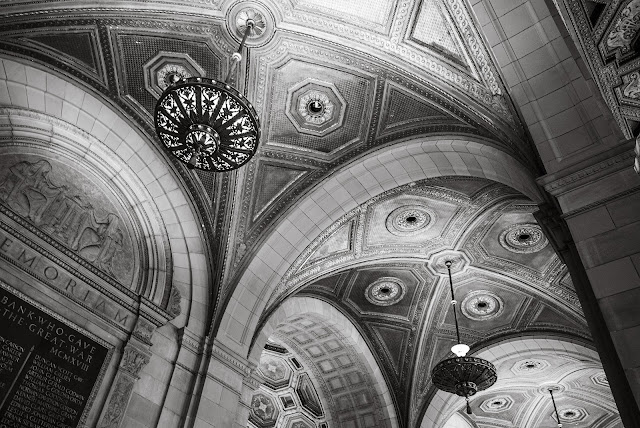Happy Fourth of July. Or... Happy Independence Day. Your choice. They both work for me.
Funny. I've had lots of time off this week but I finally got an list of portraits to retouch and then composite from a recent client so I've spent a large part of today (after swim practice; of course) making good use of all those zany tools Adobe keeps tossing us. The job I just wrapped up post production on was to retouch the portraits of ten lawyers and then drop the primary portrait images into backgrounds that consist of images of modern office environments, showcase lobbies and even some classic, older style offices.
I used Lightroom's new A.I. presets to "enhance" the portraits. The program automatically gives you layers for all the parameters a portrait photographer might need to dive into to make a portrait really work. A layer for facial skin, a layer for body skin, a layer for clothing enhancements, a layer for pupils and irises, a layer for eye sclera, a layer for hair stuff, etc. Each layer can be controlled by the usual light/color/effects/ sliders and it provides a great starting base for tweaking images. Add in some "liquify" and you can really endear yourself to clients...
The subject separation tools are better than ever and easier to use. I love being able to automatically mask a selection and output it as a new layer with a layer mask attached. It all makes compositing files easy.
To all of my old school friends this reeks of "cheating." And maybe it is. But it's a great way to work in 2024. And, as my fellow instructors at the UT College of Fine Arts constantly reminded me so long ago...there is no such thing as cheating in Art.
Once I had the images sparkly and separated into layers I went looking through my folder of interior architectural background images. I found some that work well but I've used them too often. I wanted new, fresh images of offices and lobbies so I decided to give generative fill another shot and started writing descriptions of what I wanted to see. In about 20 minutes I had a fresh batch of modern, classic and very tony looking "photographs" I was happy to use as the background layers of my composites.
I used Photoshop's "depth blur" neural filter to add a progressive blur that's sharper in the front of the frame (nearest the composited subject) and which falls off as the appearance of image depth increases. Essentially you can control how quickly you want the focus to fall off over distance in the frame. And how much of a blur you'd like to contend with. Super nice for all those times when you need images that can be multi-purposed. Sharp when you shoot them and malleable when you need to see them go convincingly out of focus. Bokeh will never seem the same to me after this.
The portrait images were also a departure for me. I used the Leica CL cameras to make the images because I really did want to have photos of subjects that were sharp front to back. From the tip of a nose to the straggly hair at the backs of the head. Why? Because it makes for very easy selecting and dropping out of the backgrounds. Much easier than an image that's mostly out of focus to begin with. Once the images are composited you can spend as much time as you want experimenting with just how far you'd like to take narrow depth of field but you'll do so knowing you built in some safety factor and can always revert to an adequately sharp starting point.
The CL, used with the Sigma 56mm f1.4 is a delightful and small package. The 24 megapixel files are, frankly, as good as anyone would need for web-targeted projects and the best part of that gear selection was how it fit into a tiny bag and rode on top of the lighting rolling case.
I wrapped up the project after a late lunch and sent it along to my client with WeTransfer.com.
I love being able to deliver big jobs (and little ones) this way. They provide a terabyte of capacity for not much money. And they have been up and running every single time I've wanted to send clients some product.
I know it's not culturally correct to work on the 4th of July but I don't really care. Projects come when projects come. It's nice to attack them quickly and move on.
One piece of holiday advice: If you and the kiddos are planning to blow a bunch of shit up with cheap Chinese fireworks be sure everyone is wearing eye protection. And maybe keep a fire extinguisher close by. It all seems like a lot of fun until someone gets their eye burned out of the socket or someone else sets a house on fire. Just sayin.



Comments
Only the result matters. How you produced the final image is irrelevant—except, perhaps, to other photographers who want to understand your technique.
We may indeed need some new rules to distinguish software-generated images from photographs adjusted using conventional or neural network techniques. But post-processing has been going on since the earliest days of photography: my maternal grandmother manually “retouched” my paternal great-grandfather’s portrait photographs. And if Saint Ansel had been able to acquire access to Photoshop, no doubt he would have preferred it to manually dodging and burning his prints.